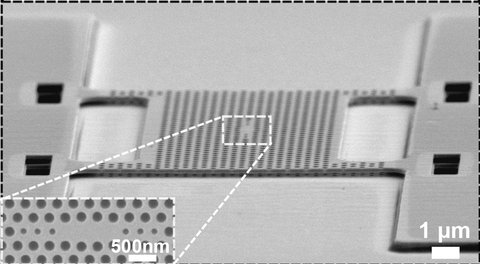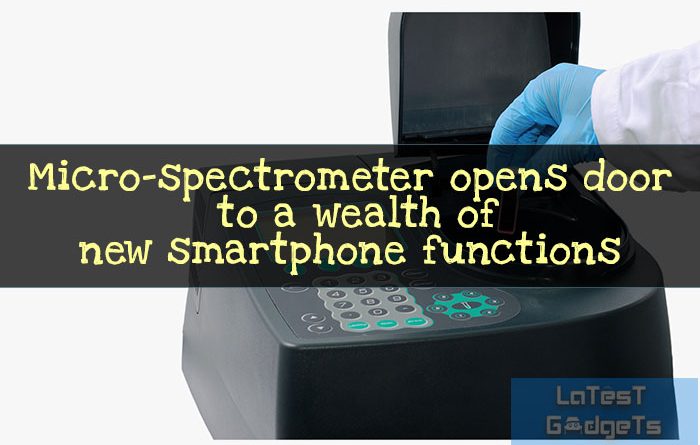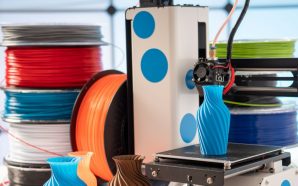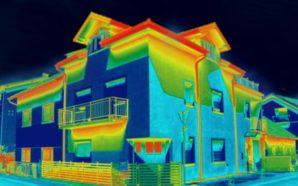Use your phone to test whether or not food is fresh, how clean the air is, or if a lump is malignant. This has all come a step closer due to a brand new spectrometer that’s so small that it can be integrated easily and cheaply in a smartphone. The little sensor developed at TU Eindhoven is just as precise as the conventional table-top models used in science labs. The researchers present their invention on 20th December in the journal Nature Communications.
Spectrometry, the analysis of visible and invisible light, has a vast range of applications. Everything and every tissue has its own ‘footprint’ in terms of light absorption and reflection, and can thus be recognized by spectrometry. However precise spectrometers are big since they break up the light into different colours (frequencies), that are then measured separately. Just after the light is split, the beams, which have different wavelengths, still overlap each other; exact measurements can therefore only be made some tens of centimeters after the splitting.
The Eindhoven researchers developed an intelligent sensor that can make such exact measurements in a completely different method utilizing a special ‘photonic crystal cavity’, a ‘trap’ of just a few micrometres into which the light falls and can’t escape. This trap is contained in a membrane, into which the captured light generates a tiny electrical current, and that’s measured. PhD student Žarko Zobenica made the cavity so that it is extremely precise, retaining just a very tiny frequency interval and therefore measuring only light at that frequency.

An electronic microscope image of the perforated membrane with the crystal cavity in the middle. Inset: the crystal cavity which captures light. Source: Eindhoven University of Technology
To be able to measure a broader frequency range, the researchers placed two of their membranes very closely one above the other. The 2 membranes influence one another: if the gap between them changes slightly, then the light frequency that the sensor can detect shifts too. For this purpose, the team, supervised by professor Andrea Fiore and associate professor Rob van der Heijden, incorporated a MEMS (a micro-electromechanical system). This electromechanical mechanism allows the space between the membranes to be varied, and thereby the measured frequency. Finally, then, the sensor covers a wavelength range of around thirty nanometers, inside which the spectrometer can discern some hundred thousand frequencies, which is exceptionally precise. That is made attainable by the fact that the researchers are able to exactly determine the gap between the membranes to only a few tens femtometers (10^-15 meters).
To demonstrate the usefulness, the research team displayed a number of applications, including a gas sensor. They also made an extremely precise motion sensor by making intelligent use of the fact that the detected frequency changes whenever the 2 membranes move in relation to one another.
You May Like: Best Android Tablets for Gaming in 2017
Professor Fiore expects it’ll take another 5 years or more before the new spectrometer actually gets into a smartphone because the frequency range covered is presently still too small. For the time being, the sensor covers just a few percent of the commonest spectrum, the near-infrared. So his team will be working on extending the detectable spectrum. They will also be integrating an additional element with the micro-spectrometer: a light source, that will make the sensor independent of external sources.

The blue perforated slab is the upper membrane, with the photonic crystal cavity in the middle. This captures the light of a specific near infrarad frequency and generates a current (A) which is measured. If the distance to the lower slab, red is changed, the captured frequency changes. Source: Eindhoven University of Technology
Given the enormous breadth of applications, micro-spectrometers are anticipated to eventually become just as essential an element of the phone as the camera. For instance, to detect smoke, determine what medicine you have, measure carbon dioxide, the level of your blood sugar, gauge the freshness of meals, and so forth.









